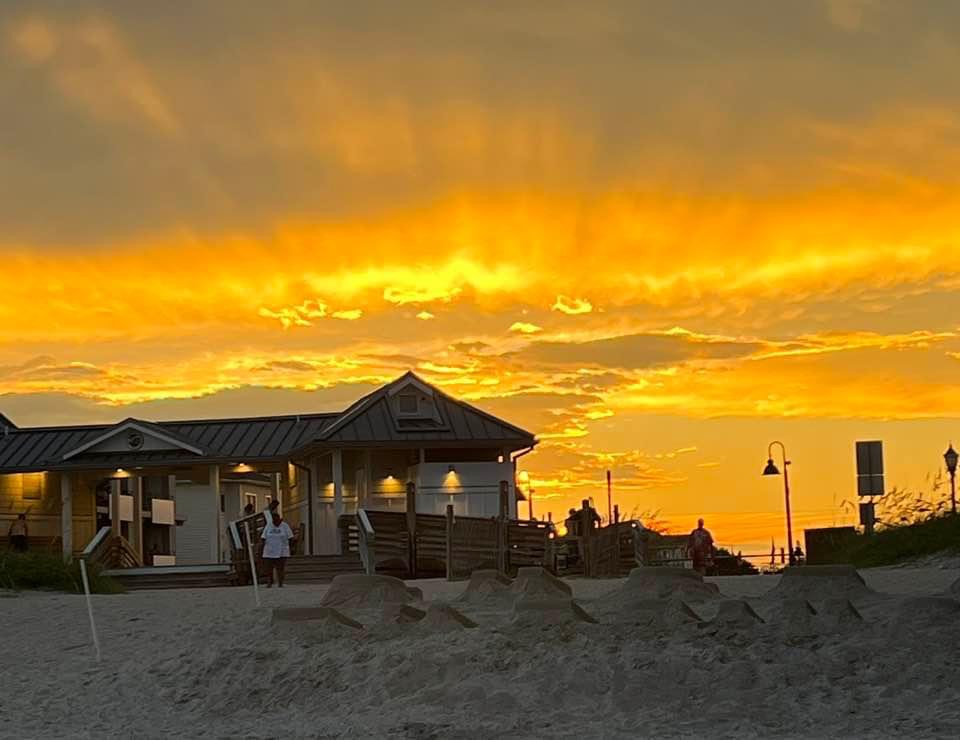On January 5, 1865, Colonel Lucius McGrath, the officer in charge of security for the Confederate Treasury’s four wagons transporting gold and silver bullion, and specie valued at $33 million from the Exchange Bank and First National Bank in Richmond, headed south toward their rendezvous point with a schooner. Muskrat awaited the arrival of the Confederate Treasury’s wagon train at the Cape Fear River near the town of Wilmington, North Carolina. However, McGrath and his group were late departing from Richmond. By the time the wagon train neared the upper reaches of the Cape Fear River, Union Admiral David D. Porter’s squadron of warships had subjected Fort Fisher to a horrific bombardment. On January 15, 1865, General Alfred H. Terry’s troops stormed Fort Fisher and Wilmington, North Carolina. The last resort of the blockade runners was sealed off and the schooner Muskrat was burned to its waterline.
During the evening hours of January 16, McGrath and a few trusted co-conspirators drove the wagons toward the Cape Fear River near the present Town of Leland and supposedly buried their gold and silver bullion in the riverbanks but retained the coins. McGrath killed those who observed the bullion’s burial to leave no witnesses. He proceeded west through Tennessee and Arkansas before joining the rear guard of Confederate Major General Joseph Shelby who led his Iron Brigade and other troops from his Missouri Division toward the Rio Grande River at Eagle Pass, Texas. They planned to cross the river and seek refuge in Piedras Negras, Mexico, to avoid surrendering to Union forces. Shelby’s mile-long column of refugees included the carriages hauling the governors of Texas, Louisiana, Missouri, and Tennessee, as well as generals Edmund Kirby Smith, Sterling Price, Bankhead Magruder, Alexander W. Terrell, and other officers of the former Trans-Mississippi Department and their families. Most of Shelby’s cavalry and infantry were sunburned and exhausted. Many of the infantry soldiers were shoeless but were driven to escape across the Rio Grande instead of surrendering and living in Yankee-occupied land. Many of those who traveled with Shelby had nothing left; their families in Missouri moved to Texas during the Civil War and their old homesteads were not comfortable or safe for former Confederate guerillas following the end of the war.
Colonel McGrath, known as “Bloodbath” McGrath, was unlike most of his contemporaries. He did not graduate from West Point or any other institute of higher learning. He abhorred the regimented military life and attained his rank through his father, Plutarch McGrath’s financial and political largesse. His rise to the rank of colonel was scandalous; one day he was a Georgia businessman and politician, with a slaveholder’s mentality, and the next day he was dressed in a tailored gray uniform complete with sash and gold colonel’s epaulettes. Lucius McGrath was a born fabulist, with an imagination unfettered by the laws of logic and probability. McGrath’s military career was not one of gallant adventures, martial music, and patriotic songs flowing around him as he mounted on his white steed Bucephalus to lead his men into battle.
Lucius McGrath was a horseless rear-echelon dandy who chose to ride into “battle” in a four-wheeled buggy with a covered top, drawn by two horses and driven by a black, enslaved coachman. His “army” was composed of the dregs of Southern prisons and New Orleans jails; “scalawags, scofflaws and pimps.” Some were talented mercenaries who fought for pay, but their talents were of the criminal kind, predominantly embezzlers, murderers, rapists, and robbers. McGrath earned his nickname “Bloodbath” in the aftermath of his only military action; the Red Hill Massacre where McGrath’s heavily armed mercenaries fell upon a group of unarmed civilian stragglers, made up of runaway slaves, Confederate Army deserters, and their women and children trying to make their way out of Georgia to neutral territory. In total, 143 adults, 79 children, 23 horses, and 25 pack mules were massacred. It was said the dead were piled up in heaps so high it took the vultures and wild animals over a month to clean the flesh from their bones. The stench was detected seven miles away. McGrath’s “army” disappeared, returning to the dark areas under rocks from whence they came. To accommodate Lucius McGrath’s shattered ego and psyche after the massacre, his father lobbied for his appointment as Secretary of the Confederate Treasury during the final year of the American Civil War. But try as he may to wash the bloodstains from his hands using Lady Macbeth’s Sin Removal Soap, it didn’t work. However, McGrath’s appointment as the Secretary of the Treasury released the proverbial fox in the henhouse. When you’re scraping the bottom of the personnel barrel, you will usually find the least desirable, lowest quality people available.
***
Confederate bank agents who’d been trailing McGrath intercepted his three-wagon convoy five miles east of Eagle Pass, Texas. He was taken in manacles to a large tent that doubled as a courtroom. The Confederate bank agents found $86,000 in silver specie hidden in the false bottom of the first transport wagon in which McGrath rode. The second wagon, entrusted to an ex-Confederate Naval paymaster and friend of McGrath, was found to contain $145,000 in gold specie hidden under the floorboards. The third wagon contained a strong box marked as funds to assist Confederate veterans struggling to return home. It was filled with common bricks and sand. No bullion was recovered in Texas.
An informant appeared with the story that McGrath ordered the bullion dumped during the hours of darkness from a bridge over the upper reaches of the Cape Fear River to be retrieved after the war. The harbor master of Mobile, Alabama, reported seeing McGrath and members of his family in December 1864, loading hundreds of bags of gold pieces aboard one of his fast blockade runners setting sail for the Bahamas while another blockade runner took on pallets of gold bullion destined for Brazil. After McGrath and his four co-conspirators were executed for treason, theft, and cowardice—shot in the back of the head while kneeling in prayer—the officer in charge of the firing squad, a Confederate cavalry colonel, finished off the pint of whiskey he carried and said, “May God have mercy on the victims of these demons. Let the record reflect the sentence has been carried out.”
Did McGrath and his co-conspirators bury bars of gold and silver bullion along a tributary of the Cape Fear River with the intention of retrieving them? Or was this another of those urban legends that appear out of nowhere and are possessed with a life cycle that rivals the Energizer Bunny? The only hint of truth to this tale may be in a detail overlooked by those burning with “Gold Fever.” In 1948, a European immigrant, looking for fertile farmland near the Cape Fear River, purchased a 107-acre plot and named a creek that was a tributary of the Cape Fear River “Schiller’s Creek.” In German, schiller may be defined as “a bronzy iridescent luster occurring on certain minerals and metals such as copper and gold.”
Oh, one more piece of the puzzle may assist readers and save them pain, expense, and time. The 107-acre plot of farmland containing Schiller’s Creek is now occupied by a facility known by its three-letter code, ILM: the Wilmington International Airport. Good hunting!



















